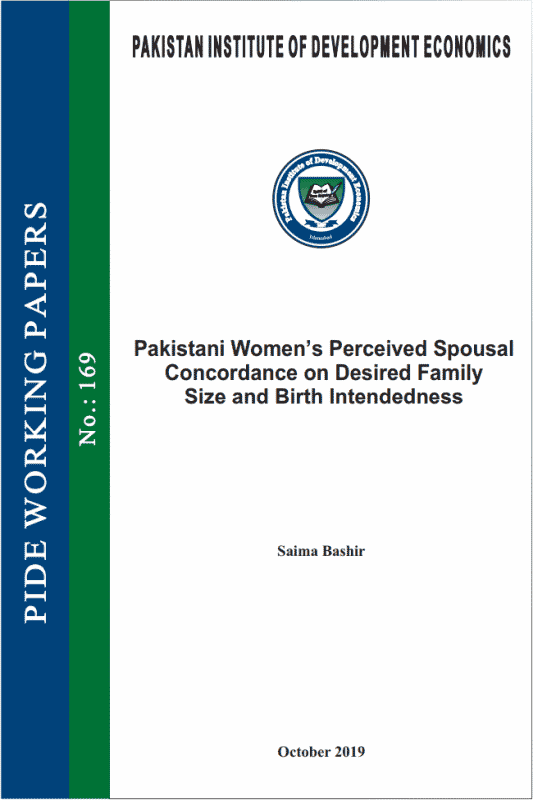Pakistani Women’s Perceived Spousal Concordance on Desired Family Size and Birth Intendedness
In Pakistan—a country in the midst of the fertility transition—16 percent of all pregnancies are unintended, most of which end in a birth. In midtransition societies, unwanted fertility is thought to be due to declines in desired family size that are not accompanied by access to family planning; however, gender issues and cultural norms may also play a role by limiting women’s reproductive autonomy. Using the Pakistan Demographic Health Survey of 1990-91 and 2012-13, I aimed to examine whether women’s empowerment (proxied by women’s education) accompanied by perceived spousal concordance on desired family size influence the intendedness of the last birth. In addition, I aimed to see whether educational gradient of unintended fertility has changed over time. Results show that perceived spousal concordance in general is not associated with unintended childbearing. Analysis show that compared to women with no formal education, educated women are more likely to have mistimed birth rather than a wanted or unwanted birth. Moreover, the educational gradient in the risk of having unintended birth has changed over time. There is a strong educational gradient for unwanted higher-order births over time. Women with a secondary education are less likely to have unwanted birth over time. The results suggest that highly educated women are least likely to want many children as but also least likely to be able to exert their own preferences.




